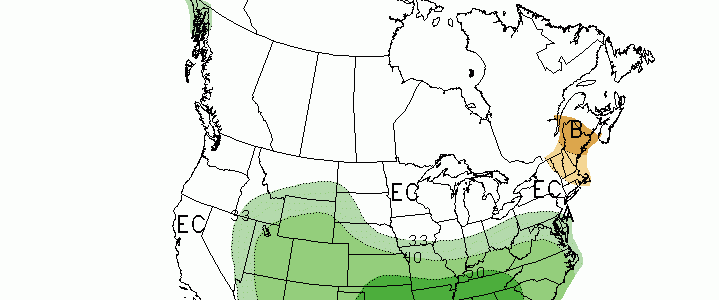Pam Knox
-

I got a phone call today from a peach producer here in Georgia who was wondering why the chill hours this year are so low compared to previous years. For example, near my office in Watkinsville GA we have only received 28 chill hours from October 1 through yesterday compared to 79 in 2014, 62…
-

Many media stories have focused on either climate change or El Niño as an explanation for why the North Pacific Ocean is so warm this year. Yesterday this blog discussed one of the consequences of the warm water–the record-setting tropical season in the Pacific Ocean this year, which has far surpassed previous seasons in the…
-

Did you know that the Southeast experiences a second peak in severe weather in late fall? While the biggest newsmaker is the spring severe weather season, there are a significant number of tornadoes that occur around November, particularly in the southern parts of the country. Weather Underground produced a story on November tornadoes today, including…
-

The Washington Post‘s Capital Weather Gang had an excellent article summarizing the amazing record-breaking tropical season in the Northern Hemisphere this year. Not only did the numbers break the old records, they smashed them. The number of named storms was up 48 percent from normal, the number of hurricanes was 178 percent of normal, and…
-

Up in Michigan, where I was born, thinking about snow in November is a regular occurrence. Here in the Southeast, snow does not usually hit until much later, if ever. The Daily Mail just published a NOAA map of the median date of first measurable snowfall with a link to an interactive version that…
-

The November outlook for climate across the United States is out and shows that the Southeast has a high probability of having above normal temperatures and precipitation for the month as a whole. You can view these maps along with 3 month outlooks at the Climate Prediction Center website https://www.cpc.noaa.gov/.
Posted in: Climate outlooks -

Two very strong tropical cyclones recent came onshore. Patricia slammed into a sparsely populated area of Mexico, while Chapala hit the war-torn area of Yemen in a very rare landfall on the Arabian Peninsula. Here are some images from the two storms which give you an idea of the impacts of the strong winds on…